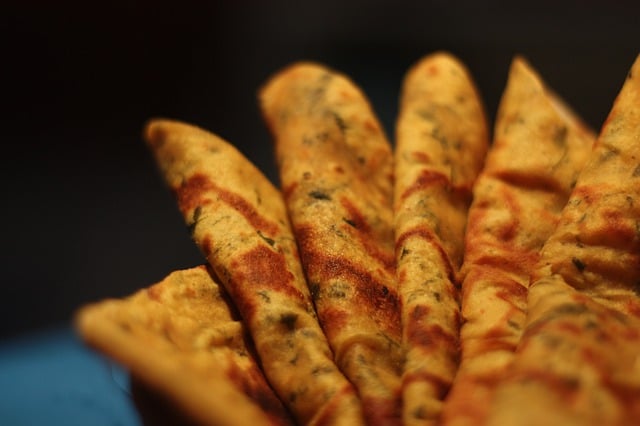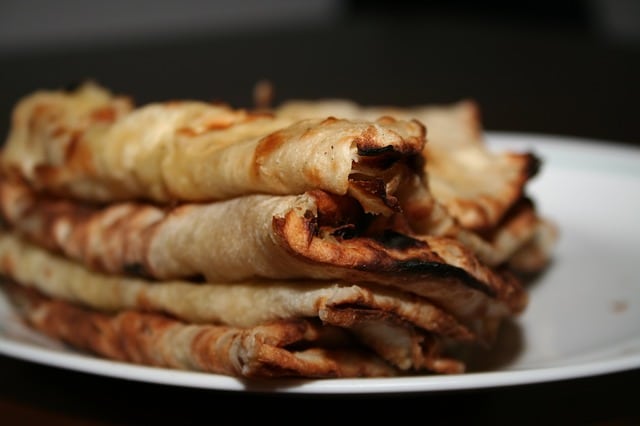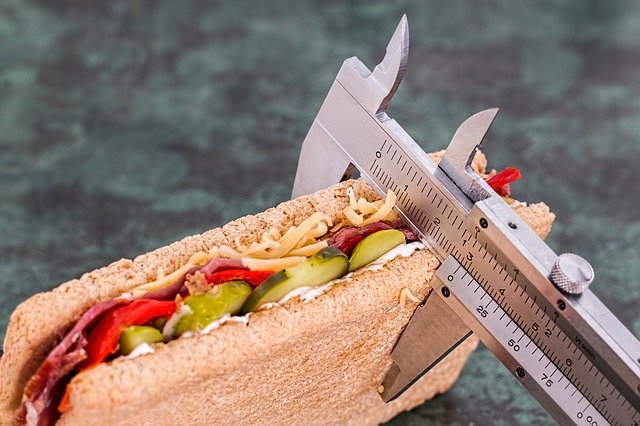Breakfast is the most important meal of the day. It the meal that helps your body break the fast that it had maintained during the night. Most of the time, many people make the mistake of skipping their breakfast because of a lack of time or lack of discipline in their lives. Never make this mistake, because a good & healthy breakfast helps you stay energized throughout the day and also keep you full. Therefore, you don’t feel the urge to binge on unhealthy snacks during the day.
Table of Contents
Are you looking for ideas to prepare some healthy and easy Indian breakfast dishes every day? You could consider these options:
1. Moong Dal Pancakes
Also known as moong dal cheela, this is a dish that is loaded with nutrients. Soak moong dal for in warm water for about a couple of hours. After 2 hours, strain the dal and grind into a thick batter adding water little by little. Ensure that the consistency is similar to a pancake batter.
Related Reading:
Muesli vs. Granola: Which One Is The Healthier Breakfast Option?
To the batter, you should add some spices such as chili powder, turmeric powder, coriander powder, salt, and roasted cumin powder. If you don’t have time to modify the batter any further, you can mix all these spices well and make a simple pancake using this. However, the traditional cheela is one where you add onions, ginger, green chili, hing and coriander leaves to the batter.
Now mix all the contents well and let it rest for about 20 minutes. After some time, add water (only if needed) and spread the batter like a pancake on a tawa, or a pan. Gently turn the pancake so that it cooks evenly on both sides. Serve the tasty cheela with any chutney that you like.
Why is moong dal cheela healthy?
In one moong dal pancake, you can get about 6 grams of protein, 3 grams of fat, 10 grams of carbohydrates and only 100 calories. To make the dish healthier than this, you can consider using whole green grams as well, but they need to be soaked overnight.

2. Semolina Upma
One of the most common breakfast options in India, Semolina Upma is also an underrated dish. Not many understand that you can customize it as much as you like to suit your taste buds. It can be prepared under ten minutes; so, there is no excuse for you to skip breakfast because of lack of time.
To make this dish, roast one cup of semolina (also known as rava or sooji) in a pan or a tawa. Once it turns golden brown, transfer the rava/sooji to a bowl. Now, add some oil in the pan and temper it with mustard seeds, urad dal, curry leaves, ginger, and green chilies. Sauté them well before you add one sliced onion.
Cook the onions for a few seconds until they turn translucent. Now add water in the pan and cook well until the water starts boiling. Ensure that the water and the semolina are always in the ratio of 2:1 for the contents to cook well. Once the water starts boiling, add some salt and start adding the semolina little by little. Keep stirring when you add this so that there aren’t any lumps formed.
Keep stirring until the semolina absorbs all the water and becomes thick. Once all the water has been absorbed by the upma, garnish your dish with coriander leaves. Serve it along with coconut chutney.
Why is Semolina Upma healthy?
Semolina is an excellent source of protein and fiber. Therefore, when you eat a cup of semolina upma in the morning, you will feel full for a long time. Consuming semolina regularly is considered to be good for your heart and blood pressure regulation.

3. Thepla
This tasty and healthy dish is quite common in the state of Gujarat in India. It is flattened bread, which has a very thin texture. The flour to make this thepla contains the goodness of many spices and fenugreek leaves, which makes this dish one of the healthiest Indian breakfast options that you can find today.
You need to thoroughly wash and finely chop one cup of fenugreek leaves as the first step of making this thepla. In a bowl, mix about ½ a cup of wheat flour, 3 to 4 teaspoons of besan (chickpea flour) and salt. Mix the contents well before you add the spices such as turmeric powder, coriander powder, chili powder, ginger garlic paste, cumin powder, and the finely chopped fenugreek leaves.
Now add about 5 spoons of yogurt to mix the contents well. The dough should be in the usual consistency that you prepare while making a roti. You can add more curd for getting the right consistency but never add water.
Now make small or medium-sized balls of this batter. Roll them very thinly on a rolling pin. You can use dry wheat flour on top of the thepla to ensure that they don’t stick on the rolling pin. Roll as thinly as possible, before you place it on a hot tawa for cooking. Spread a spoon of oil and allow the thepla to cook on both sides by flipping it on and off.
If you plan to eat the theplas a long time after cooking, ensure that you use a lot of oil while cooking them. This will ensure that the theplas are nice and soft. Theplas taste the best with chhunda mango pickle (sweetened mango pickle, where mango pieces are cooked well with jaggery and spices).
Why is Thepla healthy?
In one piece of thepla, you will find around 7% of Vitamin A, 6% of Vitamin C, 2% of Calcium and 5% of Iron. The best part of this dish is that it can be given to kids as well. It is a very tasty option. Fenugreek leaves are rich in iron; therefore, theplas can keep you energized all through the day.

Some other options of healthy Indian breakfast that you can try out
Here are some other simple and healthy Indian breakfast options that can come to your rescue when you don’t have time:
Salad made from sprouts – Cook some sprouts till they are soft and serve with fresh onion, tomato, and cucumber. You can pour the juice of half a lemon on top for that extra tangy flavor.
Idli – A perfect healthy breakfast that is healthy, as well as tasty, is the good, own idli. It is cooked using steam; therefore, you can eat it even when you want to eat a little light.
Simple bread sandwich – Even when you don’t have the time to cook anything, you can toast two slices of brown bread and prepare a quick sandwich with a few slices of tomato, carrot, and cucumber in between.

What To Note When Choosing Breakfast Dishes | Breakfast Foods To Avoid
In short, you can eat anything for breakfast except for the following dishes:
- White bread toasts
- Anything oily, spicy or full of fat-content
- Sugar-loaded dishes
- Dishes that are overloaded with dairy content such as cream or cheese
- Drinking only tea, coffee, juices or smoothies and nothing else to accompany them
- Any other store-bought instant cereal bars
All of these contain unhealthy fats and carbohydrates in them. You will start feeling hungry very soon after eating these dishes for breakfast. As a result, you will crave for unhealthy dishes many times during the day. Therefore, always choose whole meals for breakfast as they are loaded with nutrients and also keep you full for a long time.
References
FAQs
Why is breakfast considered the most important meal of the day?
Breakfast breaks the overnight fasting period, replenishes your supply of glucose and provides other essential nutrients to keep your energy levels up throughout the day. It jumpstarts your metabolism and thus, helps you burn more calories as you get started with your day.
5 healthy breakfast options for kids?
1. Ragi upma- Ragi recipes are popular all over India as it has the highest concentration of anti-oxidants and phenolic content among all other millets and grains. It is the richest source of calcium and iron among plant foods and is considered excellent food for growing children. Ragi also helps in building strong bones and curbs excessive weight gain.
2. Oats and Apple dalia- Oats are loaded with nutrients and with a combination of milk and apple, it becomes a wholesome breakfast. So make a sweet porridge by adding any fruit like banana, berries or raisins and top it with chopped mixed nuts and a drizzle of honey for
added goodness. Nourishing, delicious and so versatile, this breakfast bowl is ideal for kids.
3. Cheela- Cheela is a popular breakfast option in many Indian households. It’s very versatile and can be made with besan, moong dal (dhuli) or green moong dal (sprouts) Being high in protein it makes a perfect dish for kids at the beginning of the day.
4. Whole Wheat Beetroot Paratha- is a great way to feed your fussy kids a new range of veggies. It is filled with the goodness of beets and fibre from the whole wheat flour. Not only it is healthy, but it also tastes delicious. These parathas can also be used to make wraps or kathi rolls for kids lunch box or after school snack. Egg bhurji or paneer bhurji make an ideal filling or can be given on the side.
5. Masala omelette- A delicious breakfast option for the whole family including kids. It curbs the hunger pangs and takes less than 10 minutes to prepare, so it’s great as an after school snack or quick meal during the holidays. The omelette is protein rich – excellent for children’s growth and development, and you can add as many veggies to it, like- onions, tomatoes, bell peppers (any color), herbs like fresh coriander and make it colourful and exciting for the kids.What should I drink first thing in the morning?
Nutritionists suggest that consuming alkaline drinks in the morning like buttermilk, or lukewarm water with a pinch of Himalayan pink salt is a better idea. You can even start your day with lime water or methi water to reboot your system after long hours of rest. A few drops of coconut vinegar or apple cider vinegar with water, plain coconut water, raw honey and aloe vera juice are also good options too.
Is it a bad idea to drink morning tea on empty stomach?
Yes. The ideal time to have tea is mid-morning after having your breakfast. This is when your metabolic activity starts functioning properly and a cup of tea or any other beverage may get digested easily. Following are the reasons that explain as to why that cup of tea could be harming your body, rather than refreshing-
1. Disrupts your metabolic activity- due to imbalance of acidic and alkaline substances in the stomach which can interfere with the regular metabolic activity of the body and keep you troubled through the day.
2. Dehydrates your body- tea is diuretic in nature which means that it removes the water from our body. Our body is already dehydrated due to eight hours of sleep and intake of water or food, tea only adds to that state of dehydration.
3. Erodes oral health- when you consume tea early morning, the bacteria in your mouth will breakdown the sugar which leads to increased acid levels in the mouth and this can cause erosion of the enamel in your teeth. It may even cause gingivitis due to excessive bacteria build up.
4. The caffeine kick hits back- caffeine is known to give you an instant energy boost. However, giving your body a strong dose of caffeine on an empty stomach may have side effects that include nausea, dizziness and other unpleasant sensations. It is best to have tea or coffee after eating something.
5. Leads to bloating- due to the presence of milk in the tea, many people may feel bloated majorly because of the high lactose content in the milk that can affect your gut when it is empty. This can lead to gas and constipation.


